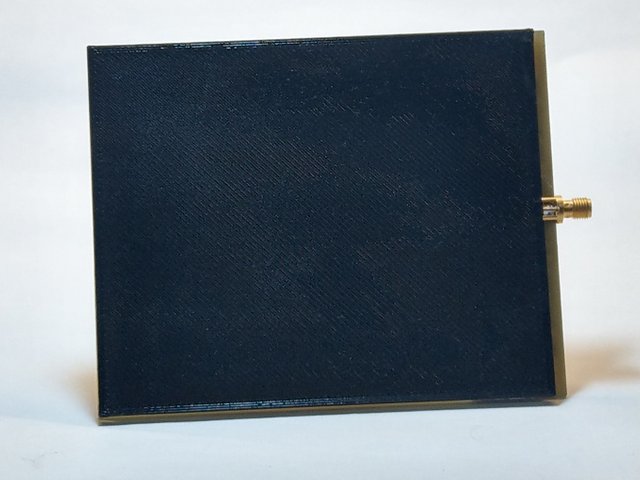
Flat Ultra Wide Band Antenna Suitable for SDR
About
I was never statisfied with the commercially available wide band antennas. They were all too large or did not have suitable VSWR over the frequency range generally required by SDRs. I read many research papers and ultimately made a omni-directional ultra wide band antenna, but it was too expensive for most people. Details regarding that antenna can be found at https://www.rtl-sdr.com/constructing-a-3d-printed-wideband-900-mhz-to-11-ghz-antenna/
However, a bi-directional antenna was good enough for most people, so I have made a flat one. The antenna I ended up with is 5 inches by 4 inches and about 3 mm thick with an SMA connector. It is quite definitely not a square patch antenna, which usually has a narrow bandwidth.
This antenna has a VSWR measured to be under 2.00 from around 750 MHz to over 3 GHz. It simulates to have a VSWR under 2.00 out to over 6 Ghz. This is enough for most of the available SDRs. It works very well with WiFi, Bluetooth, Zigbee and other systems within the bandwidth.
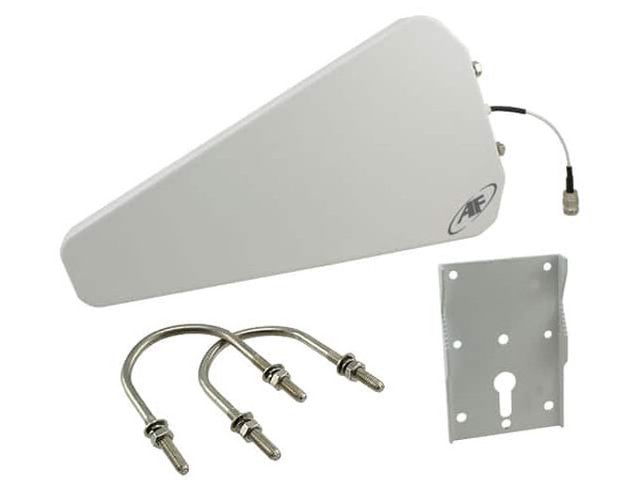
Typical Directional Log Antenna
Existing Antennas
The log antenna, Figure 2, has a wide bandwidth, but it is specified as having ranges, because the VSWR rises over 2.00 several times over that range. The antenna measure sover 40 centimeters long, which is problem for me in a laboratory setting. It is too large to fit anywhere and wants to be permanently fixed to a pole or something like that.
The other antenna I have is a discone type device, Figure 3. It is huge. There is not practical for it to fit on a lab bench around various RF devices. It is measures around 28 centimeters at its base. It needs to be elevated above any ground planes, which complicates a laboratory environment with metal bench tops. I have it sitting on a shelf above the computer monitors on the opposite side of the room away from the lab bench. This does not work well when I am trying to deal with wireless devices connected to USB hubs on the bench with short range features.
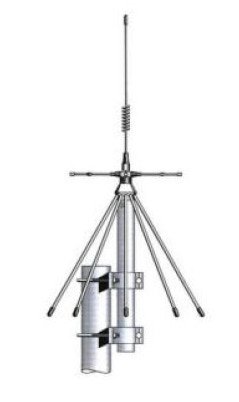
Discone Type Wide Band Antenna
Figure 4 shows the Flat Antenna next to the Log Antenna for a size comparison that illustrates just how much space saving there is with this new device. This is no small feat. This Flat Antenna is useful around all manner of RF devices on the bench without causing space issues, getting in the way of instruments and couples well with all of the wireless devices I am using. It is small enough with a convenient shape for moving it around and keeping it above a metal bench top. It only needs to be a few centimeters above any ground planes when perpendicular, not horizonal.
Due to its size and shape, near field problems have not been a problem, as with the other antennas. The antenna is quite directional, which is not much of a problem, since the RF bounces around all over the place. A Faraday shield is the only way to keep this device from picking out everything in the vicinity. The neighbors IoT devices create mountains of RF clutter. This antenna picks up all of it. If you only want restricted bandwidths, band pass and reject filters can be used. The load impedance is 50 Ohms across the band making an excellant match for all of the filters I have here.Figure 4 shows the Flat Antenna next to the Log Antenna for a size comparison that illustrates just how much space saving there is with this new device. This is no small feat. This Flat Antenna is useful around all manner of RF devices on the bench without causing space issues, getting in the way of instruments and couples well with all of the wireless devices I am using. It is small enough with a convenient shape for moving it around and keeping it above a metal bench top. It only needs to be a few centimeters above any ground planes when perpendicular, not horizonal.
Due to its size and shape, near field problems have not been a problem, as with the other antennas. The antenna is quite directional, which is not much of a problem, since the RF bounces around all over the place. A Faraday shield is the only way to keep this device from picking out everything in the vicinity. The neighbors IoT devices create mountains of RF clutter. This antenna picks up all of it. If you only want restricted bandwidths, band pass and reject filters can be used. The load impedance is 50 Ohms across the band making an excellant match for all of the filters I have here.
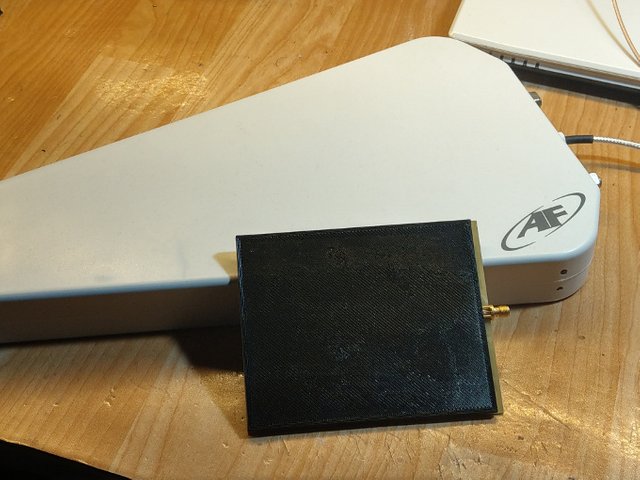
Our Flat Antenna Size Comparison with the Log Antenna
Specifications
Figure 5 shows the VSWR as measured by the NanoVNA Version 2. It only goes out to 3 Ghz. The device must be calibrated before use, or you will get extraneous results. I am told the VSWR never goes above 2.00 until after 6 GHz. This is a remarkable antenna. I never found anything comparable to it on the Internet.
It can be used for all wireless and SDR applications normally within the 750 MHz to 6 GHz bandwidth. This is not guess work or speculation. The network analyzer shows the response clearly.
The antenna is 5 inches long by 4 inches wide by roughly 3 mm thick, not counting the SMA connector.
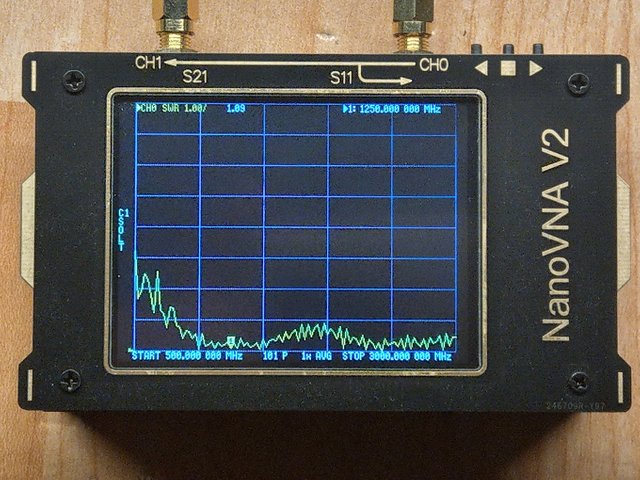
VSWR of Our Flat AntennaVSWR of Our Flat Antenna
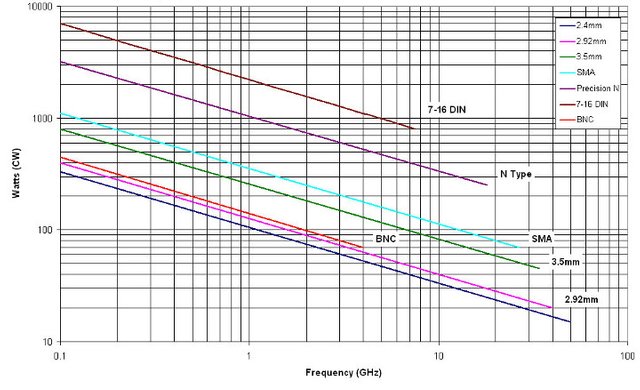
SMA Connector Power Limits with Frequency
Several people asked about Tx power limits with frequency. The transmit power is only limited by the SMA connector as shown in the graph.
Bandwidth from 750 MHz to 6 GHz
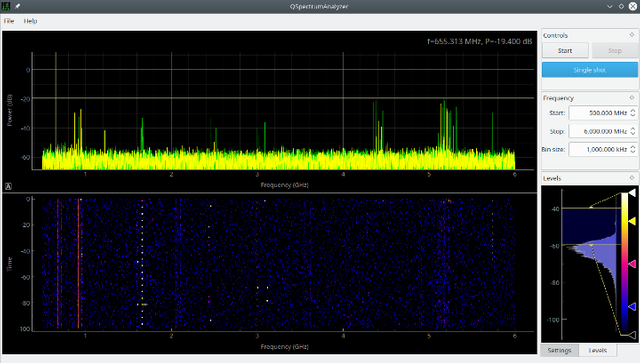
Full Bandwidth from 750 MHz to 6 GHz
Multiple Antennas
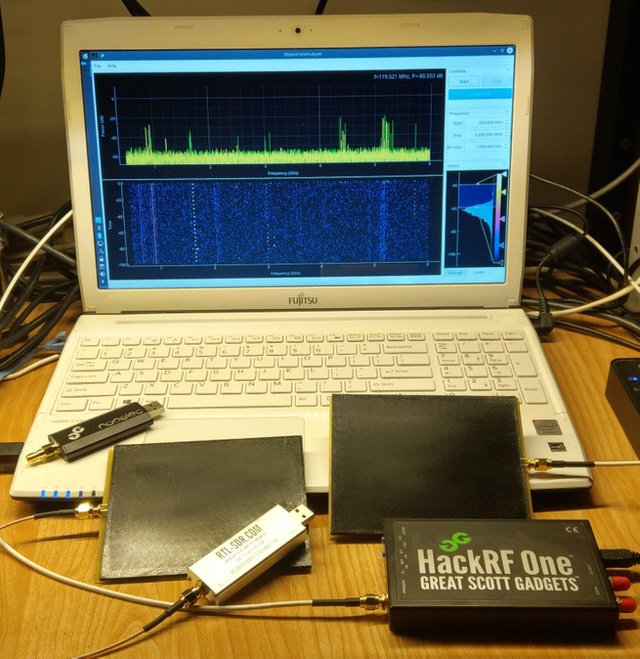
Rx and TX with multiple SDRs and Antennas
I use two identical antennas: one for Rx and one for TX. I transmit with the HackRF and receive with the RTL-SDR. It works very well with WiFi, Bluetooth, Zigbee and other systems within the bandwidth as well as cell phones and other WLAN devices. I use them with Ubertooth One and a UD100 Bluetooth Adapter. The Bluetooth range with this setup is awsome.
Conclusion
Please visit our KickStarter project for details on how to obtain this fantastic antenna.